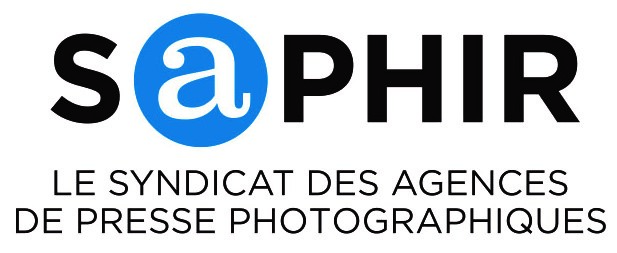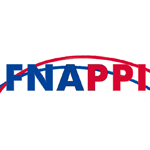On 12 September the European Parliament voted overwhelmingly the amended version of the Copyright Directive that was originally rejected on 5 July by 30 votes. The most controversial passages of the law have been watered down. The voted version can now go into “trilogue” between the three EU institutions to agree on a final text. The legislation will face a final vote in 2019.
If the directive goes through, it will be the result of 10 years of work to solve the “Transfer of Value” in the digital eco-system. Press publishers and the creative industries will benefit. What is in the directive for picture agencies and for photographers?
“The Internet As We Know It”
The proposed legislation includes two controversial articles: article 11 and article 13.
Copyright owners insist that the copyright directive is about leveraging their bargaining power in an asymetric relationship with online platforms. Online platforms and their surrogates, such as trade association EDIMA, the EFF, the Pirate Party, la Quadrature du Net etc. claim that the “Internet As We Know it” will break down: no more links, no more memes, no more gifs, no more fun.
Siada El Ramly, Director General of EDiMA stated on September 12th, right after the result of the vote:
“TODAY, in Strasbourg, the European Parliament has voted in favour of a copyright directive that will restrict the access of European citizens to share news online and will force the filtering of citizens’ uploads.”
This statement is deeply flawed: it is factually wrong to mislead innocent users. Faced with disinformation, it is important to read what these articles 11 and 13 actually say, rather than the caricatural fearmongering spread intentionnally by the most fearce opponents of the law.
Art. 11 or “The Link Tax” ?
Background:
Press publishers complain that specialised aggregators can automatically scrape, store, combine, re-combine and display full or parts of online press publications instantly without permission or remuneration.The Impact Assessment established by the European Commission ahead of their copyright proposal notes that 57% of online users access newspapers through social media, news aggregators and search engines and nearly 50% of these users only browse and read news extracts on these websites. News aggregators have become subsitutes for the press publications, while not contributing to the costs of producing the information.
Against this background, Art. 11 creates a new neighbouring right for press publishers, referred as “Link Tax” by the opponants of the law.
Press publishers will now be able to protect small excerpts from press publications from the unauthorized use by search engines and news aggregators and/ or “obtain fair and proportionate remuneration for … [their] uses.” (Voss Report Recital 32)
The text agreed on September 12th further clarifies that…
- “This protection does not extend to acts of hyperlinking.” (Recital 34)
- This right is to no prejudice to “the rights of the authors and other rightholders in the works and other subject-matter incorporated therein” (Recital 35)
Conclusion: The neighbouring right for press publishers is not a “tax”, it’s a right, and links are expressly excluded from the scope of the legislation.
Art. 13 or mandatory “Upload filters” ?
Background:
Not only press publishers have seen their revenues dwindle with the advance of the digital age: all creative industries have had that experience. The “business of free” allows platforms to develop an advertising based business model with the data of ther users sharing and visiting this content, without any revenue being fuelled back to the creators of this content – musicians, music producers, video producers, videographers, photographers …
Rightholders complained about the lack of accountability of platforms, their opaque reporting sytem.
On the other hand, technology to identify creative content online, for the purpose of either taking infringing content down or remunerating right holders has been in existence for many years. Platforms already scan users’ content, process their personal data and block content, sometimes arbitrarily.
Against this background, Art.13 obliges platforms “providing access to copyright protected content uploaded by their users without the involvement of right holders” (Recital 37) to “conclude fair and appropriate licensing agreements with right holders” (amended Article 13 – paragraph 1)
The original text proposed by the European Commission does not require the use of specific technology but of “appropriate and proportionate measures“. The generic wording accomodates for any type of functionality, such as watermarking, fingerprinting, file hash, or other technologies or even human review.
Going further, the Voss report voted by the European Parliament has dropped the reference to “measures” (“such as the use of effective content recognition technology“). Instead the law now encourages “online sharing service providers and right holders” to “cooperate in good faith“.
The amended report voted on 12. September further specifies that cooperation shall not lead to “any identification of individual users nor the processing of their personal data” and take account fundamental rights, the use of exceptions and limitations as well as ensuring that the the burden on SMEs remain appropriated and that automated blocking of content is avoided“;
Conclusion: the directive obliges platforms to conclude licenses with right holders and to negotiate “in good faith” with them. It does not oblige platforms to install “upload filters”. The expression appears nowhere in the text. To the contrary the amended Voss report expressly excludes “automated blocking of content”.
Because Art 13 requires “cooperation” between platforms and rightholders for “appropriate and proportionate” measures the expected outcome is a better functionning of the online market, not its breaking down.
What is in the copyright directive for picture agencies and for photographers?
CEPIC has been engaged from the very beginning in the copyright discussions. CEPIC published a White Paper on the Protection of Images Online ahead of the consultations, made submissions to the European Commission and presentations at the European Parliament, held meetings with the copyright unit and with a number of MEPs. We coined the concept of the “value block”, pointed to the incoherence of the jurisprudence of the Court of Justice of the European Union when it comes to Framing, asked the Framing Loophole to be closed …
Although we are relieved that the draft directive is in the trilogue, we think that photography is still insufficiently protected. How effective will be the provisions refering to image search engines in Art.13, unlikely to be adopted, as long as the “framing loophole” is not closed? Photo-journalists will clearly benefit from Art.11, but what about other photographers? How will the obligation to “good faith” work out in practice? Will collecting societies negotiating with platforms within Art.13 b) fuel back their fair share to picture agencies too or will they be a new source of “transfer of value” and a new monopoly?
Only a number of tweaks would be necessary to lift these uncertainties and make the directive fully work for photographers *and for* picture agencies as legitimate rights holders in the value chain. CEPIC will continue to work with the European institutions for the directive to be definitively adopted and find a compromise that will take into account the needs of all European creators and cultural professionals along the value chain in order that they all prosper in the online world.
(sf)
Resources
- Tool to compare all three versions coming into the trilogue here
- Amendments voted in Voss Report here
- Who voted what? List of MEPs here
















